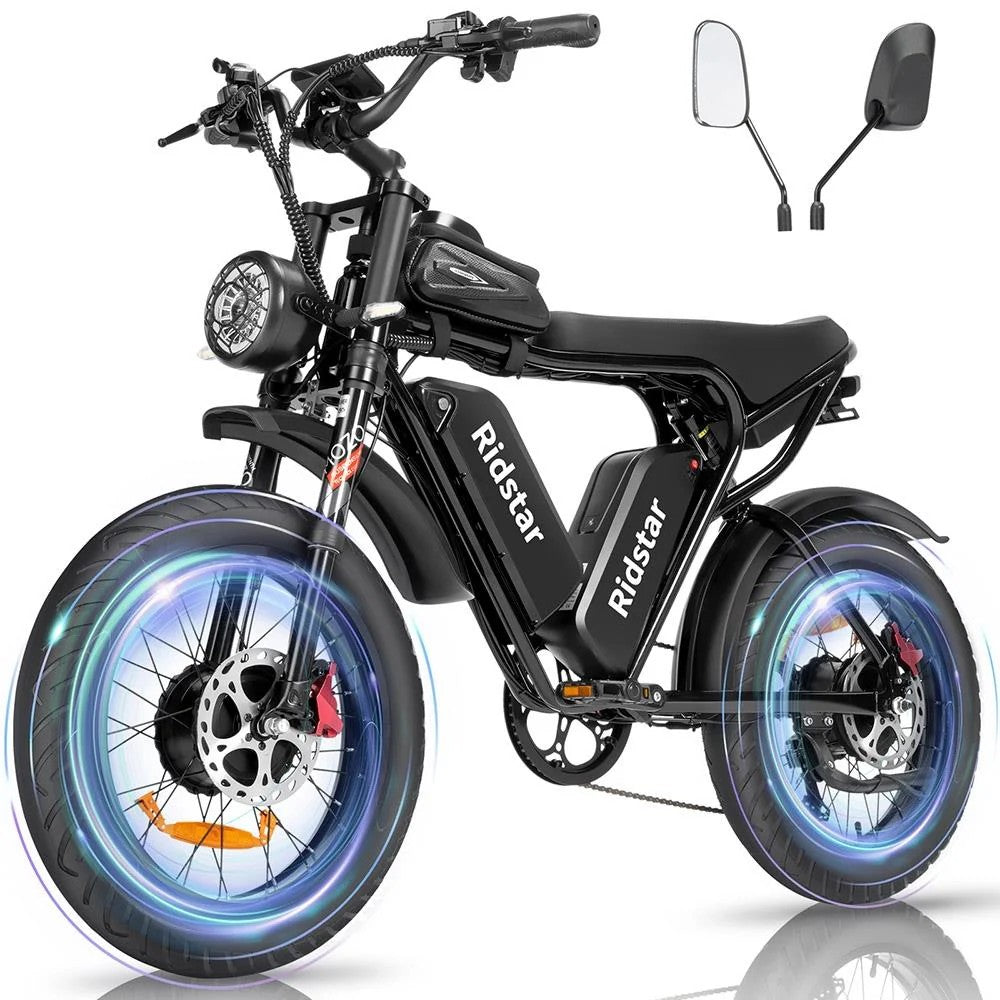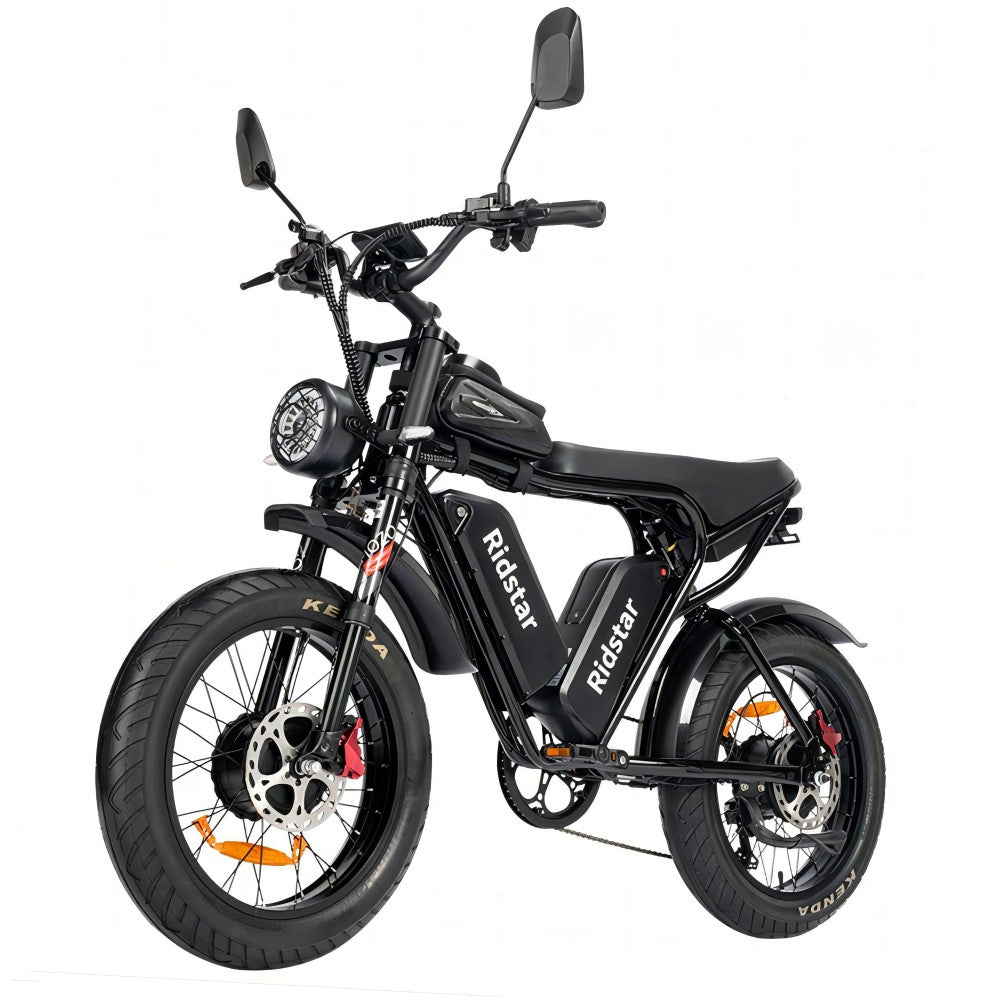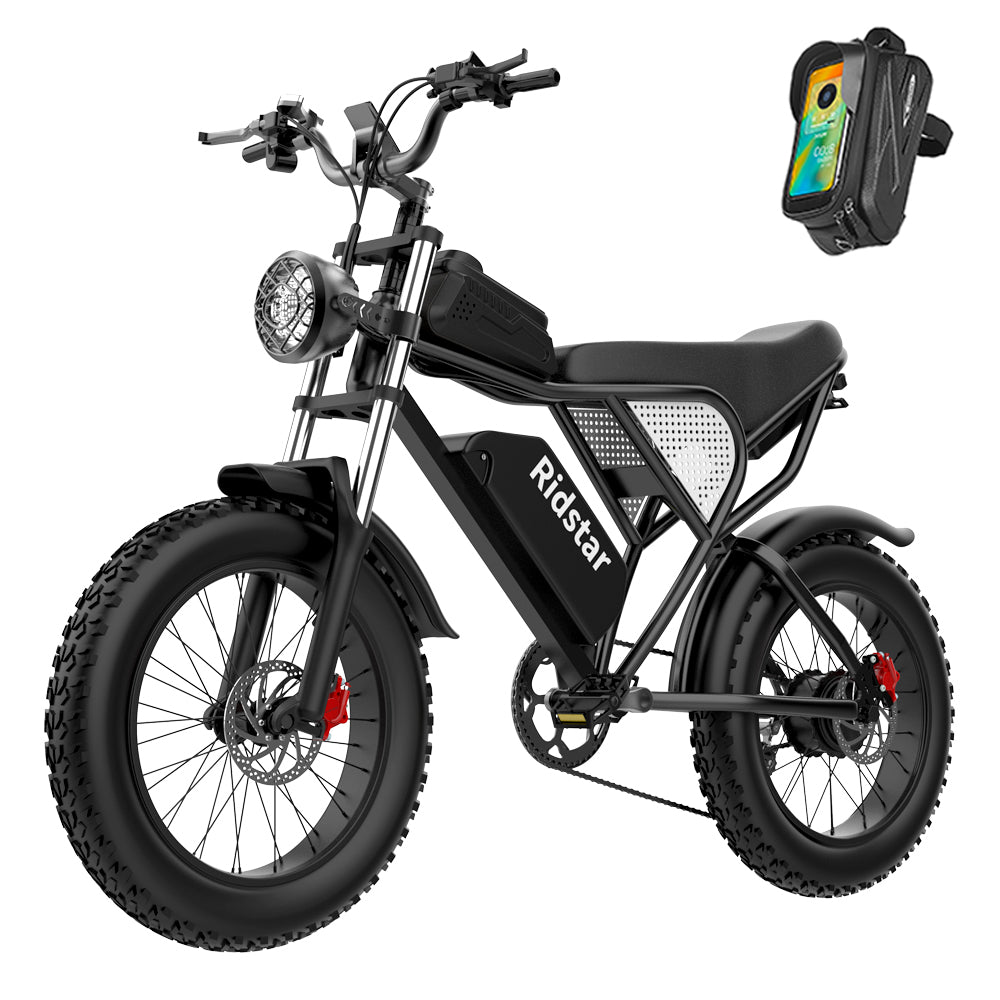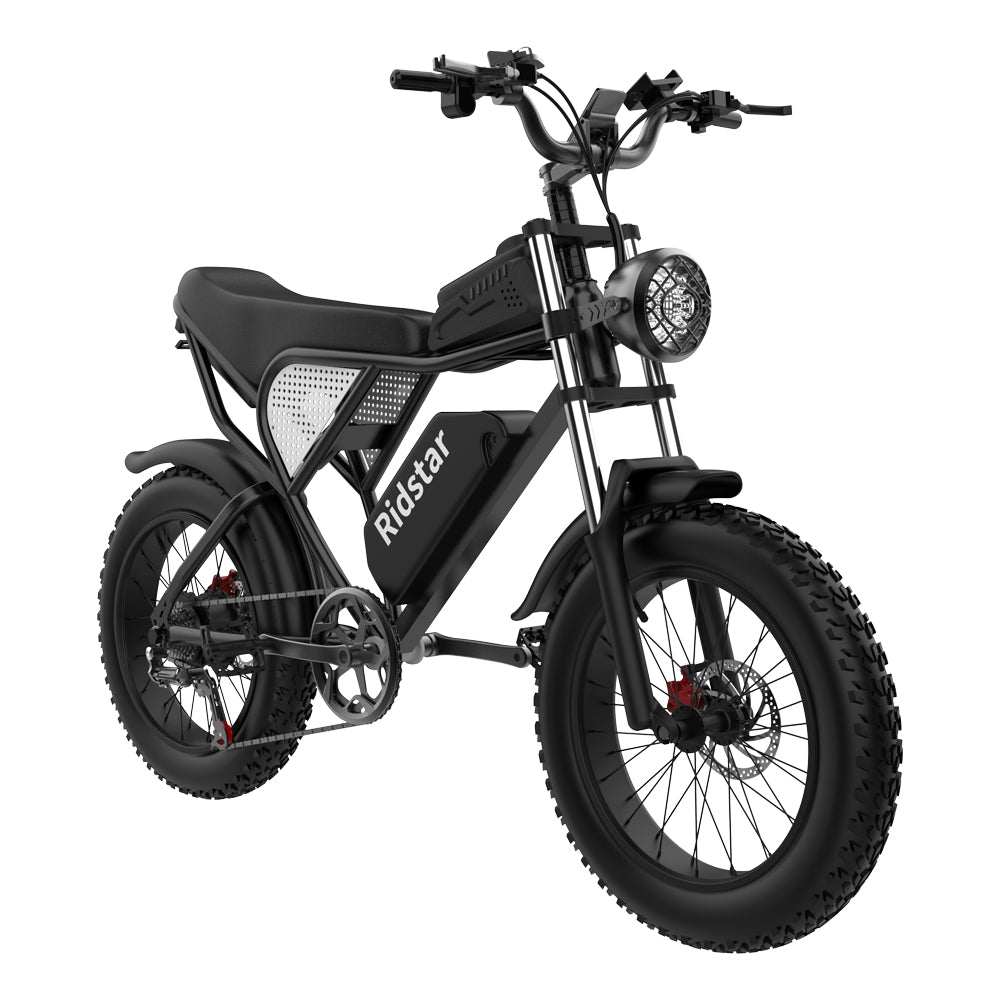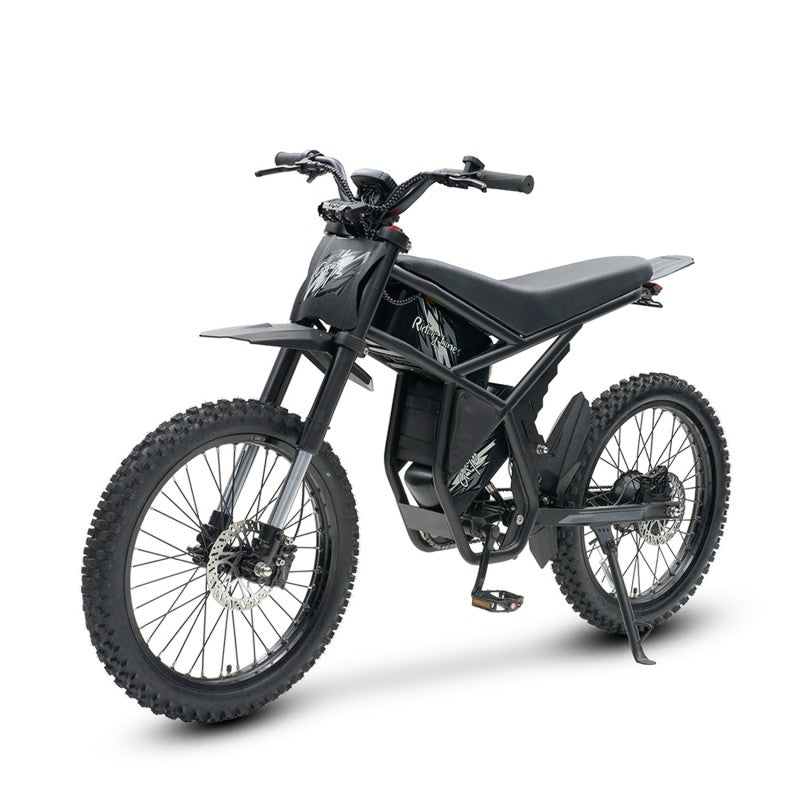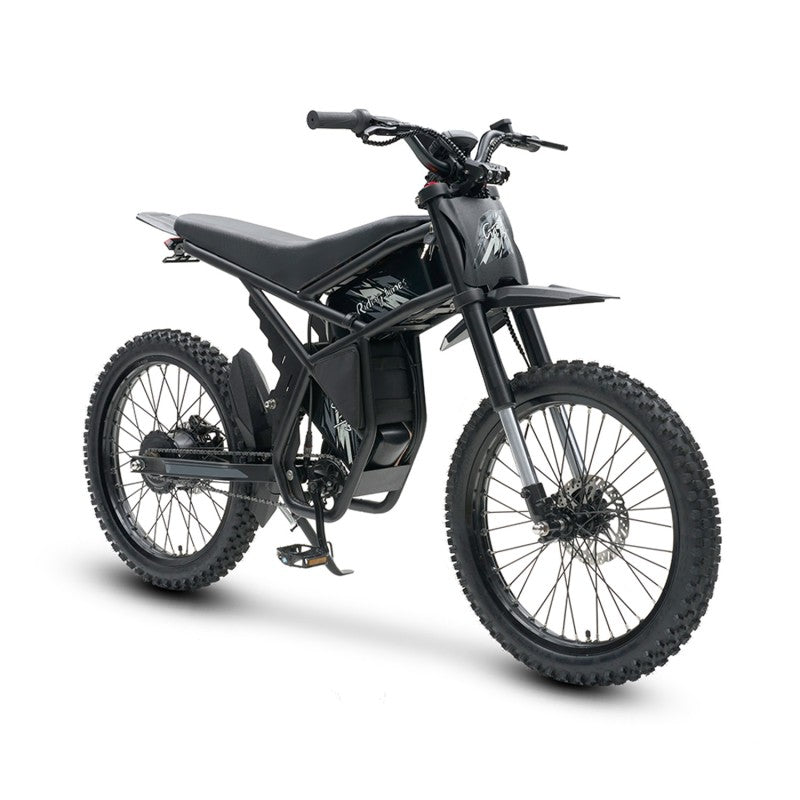Fat tire electric bikes have gained massive traction over the past few years, and for good reason. These chunky, wide-tire e-bikes offer a unique mix of stability, power, and versatility, making them perfect for riders who want to go off the beaten path—or simply ride in comfort on rougher urban streets. In 2025, this type of e-bike isn't just for mountain adventurers anymore. It’s becoming the go-to option for commuters, casual weekend riders, and outdoor enthusiasts alike.
Fat tire electric bikes have gained massive traction over the past few years, and for good reason. These chunky, wide-tire e-bikes offer a unique mix of stability, power, and versatility, making them perfect for riders who want to go off the beaten path—or simply ride in comfort on rougher urban streets. In 2025, this type of e-bike isn't just for mountain adventurers anymore. It’s becoming the go-to option for commuters, casual weekend riders, and outdoor enthusiasts alike.
The Appeal of Fat Tire Electric Bikes for All-Terrain Use
When people hear “fat tire,” they usually think of something bulky or hard to manage. But in truth, electric bikes with fat tires are some of the easiest to ride. The oversized wheels—usually at least four inches wide—offer more surface contact, which means better grip, shock absorption, and stability. Whether you're riding on sand, snow, rocky trails, or cracked city streets, a fat tire e-bike handles it all smoothly.
One of the best things about all-terrain fat tire electric bikes is that they’re not limited to one style of riding. Riders can tackle mountain paths in the morning and use the same bike to cruise through the city in the evening. With strong motors—typically ranging from 500W to 1000W—you get the power needed for hill climbs, headwinds, and long distances, all without breaking a sweat.
Comfort and Control for Commuters and Weekend Riders
For those who use their bikes for daily transportation, the comfort of a fat tire electric bike is unmatched. The wider tires act like natural suspension, absorbing bumps and vibrations better than narrow-tire models. Riders who suffer from back pain or joint sensitivity will appreciate the smoother ride, especially when commuting long distances or over uneven roads.
You’ll also notice how fat tire commuter e-bikes are now being designed with ergonomic handlebars, padded saddles, and full suspension systems. These features make them ideal for both short and long rides. Add in options like integrated lights, fenders, and cargo racks, and you’ve got a capable vehicle for running errands, getting to work, or even school drop-offs.
Battery Life and Motor Efficiency
Modern long-range fat tire electric bikes come equipped with powerful lithium-ion batteries that can last up to 60–80 miles on a single charge, depending on the assist level and terrain. These e-bikes often feature multiple power modes, giving riders the choice to conserve energy or go full throttle when needed. This flexibility is especially useful for riders who switch between city roads and trail riding.
You don’t have to be a tech expert to operate one either. Most models come with intuitive displays that show battery level, speed, trip distance, and power assist level. That ease of use, combined with the motor boost, makes riding more accessible to older adults or people new to biking.
A Great Option for Outdoor Fitness and Exploration
Many people turn to fat tire e-bikes for the fitness benefits too. Even though you’re getting help from the motor, you’re still pedaling—burning calories, working your muscles, and building endurance. Unlike traditional fitness routines, riding a bike outdoors is refreshing and offers mental health benefits. Nature trails, forest paths, or coastal rides all become more enjoyable and less exhausting with a pedal assist fat tire e-bike.
Riders who want to explore rougher terrain will also find that off-road fat tire electric bikes handle mud, gravel, and steep climbs far better than regular e-bikes. That means less slipping and more confidence—especially when riding in unpredictable weather or conditions.
Cost-Effectiveness and Maintenance
A high-quality fat tire electric bike isn’t cheap, but it’s far more affordable than a car or motorcycle. And the maintenance is minimal: check your tire pressure, keep your chain lubricated, and charge the battery regularly. That’s about it. Even better, you won’t be dealing with gas prices, insurance, or parking fees. Many city dwellers are now replacing their second car with a fat tire e-bike for urban commuting, and they aren’t looking back.
As technology improves and competition increases, prices are dropping. Entry-level models are becoming more accessible, and even mid-range bikes now come with advanced features like hydraulic disc brakes, torque sensors, and app connectivity.
Choosing the Right Fat Tire E-Bike for Your Needs
The best fat tire electric bike for you depends on your riding style. If you're looking for speed and power, go for a 750W or 1000W model. If you're commuting short distances, a 500W motor will be more efficient. Consider the terrain you’ll be riding on. Some models are built for snow and sand, while others are optimized for dirt trails or paved streets.
You should also think about frame size, battery range, weight capacity, and whether you need extras like a rear rack, throttle-only mode, or integrated lights. Always test ride a few models if possible. And make sure you’re aware of local laws regarding e-bike speed and motor limits.
Final Thoughts: A Worthwhile Investment in 2025
Fat tire electric bikes represent a smart, fun, and sustainable way to get around in 2025. Whether you're conquering rocky hills or navigating rainy city streets, they deliver performance, comfort, and adaptability. With growing interest in eco-friendly transportation, investing in a fat tire electric bike for daily use and outdoor adventure is a forward-thinking move.
They’re not just trendy—they’re practical, powerful, and ready for wherever the road (or trail) takes you.
FAQs
1. Can I use a fat tire electric bike in the snow or sand?
Yes, that’s exactly what they’re made for. The wide tires offer excellent grip on soft or slippery surfaces like sand, snow, and mud.
2. What’s the ideal tire pressure for fat tire e-bikes?
Generally between 5 to 30 PSI. Lower pressures provide better grip on off-road terrain; higher pressure is better for paved roads.
3. How long do fat tire e-bike batteries last?
With good care, most lithium-ion batteries will last 2–5 years or about 500–1000 full charge cycles.
4. Are fat tire e-bikes heavier than regular e-bikes?
Yes, due to the larger tires and frames, they are typically heavier. But the motor compensates, making them feel lighter during rides.
5. Are there folding fat tire electric bikes?
Absolutely. Many brands now offer foldable fat tire electric bikes, perfect for apartment dwellers or RV travelers.
6. What’s the legal speed limit for e-bikes with fat tires?
In most areas, it's 20 mph for Class 2 e-bikes with throttle, and up to 28 mph for Class 3 pedal-assist models. Always check local laws.










